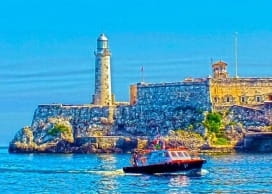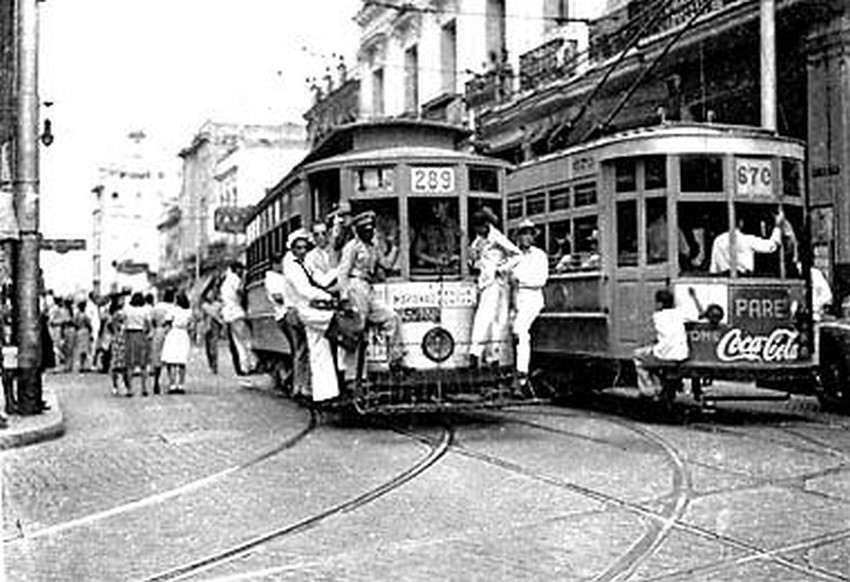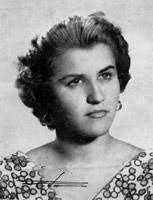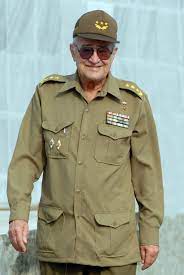
Havana ephemeris. September 3.
1830. Juan Bellido de Luna Guzmán is born in the town of Regla, Havana.
He was an outstanding journalist and patriot, considered the highest representative of Cuban journalists from emigration.
He participated in the Vuelta Abajo conspiracy in 1852 and from Cuba he sent materials that were reflected in the newspaper La Verdad, published in New York by Cuban exiles. He was also editor and writer of the clandestine independence newspaper La voz del pueblo en Cuba.
In 1852 for an editorial he published in defense of the cause of Cuba he was captured, thrown in a dungeon and sentenced to die. Thanks to influential Spanish friends, this sentence was commuted to exile to an island located in the Gulf of Guinea, off the west coast of Africa. On the trip to that place, the boat in which he was traveling was shipwrecked. De Luna was able to be picked up by the crew of a United States merchant ship that took him to New York. He immediately linked up with Cuban patriots who lived in that North American city.
He returned to Cuba in 1898, after the war against Spain ended.
His death occurred in Guanabacoa, Havana, on April 30, 1902.
1901. The Havana Railway Company officially inaugurates the electric streetcar service in the Cuban capital, with railway lines that surpassed its municipal limits. The electrical plant that guaranteed the service was located in Águila and Colón in what is now Centro Habana and generated all the direct current energy required.

At that time the city had more than 240,000 inhabitants and the old animal-drawn tram lines were not only insufficient, but also extraordinarily deteriorated. Little by little, the new lines spread throughout the city, whose physiognomy was ostensibly marked by the constructions linked to the electric tram.
1923. Luis Sánchez Varona y Calvo is born in Havana.

In his professional work, he stood out in the fields of paleontological and geological research. He made numerous contributions to studies on mammals, most particularly the Cuban hutias. As a publicist, he developed from the pages of Bohemia magazine and other publications a meritorious campaign in favor of the knowledge of Cuban fauna.
He passed away in Havana on July 15, 1989.
1951. Ernestina Lecuona dies in Havana.

She was born in the city of Matanzas on January 16, 1882, when she was still a child, her family settled in the Cuban capital, where she began piano studies at the Asturian Center Academy.
She was the author, instrumentalist or accompanist of prestigious national and foreign lyrical singers in radio stations and theaters. She composed waltzes, criollas, boleros, songs, congas, dances and guajiras that, in several cases, achieved international diffusion. Regardless of her texts, she used verses from various Cuban and Argentine poets in her pieces. Several of her musical creations had notable interpreters when they were sung, for example, by Esther Borja, Pedro Vargas, Tito Guízar and Rita Montaner, among others.
Ernestina accompanied her brother Ernesto Lecuona, a prestigious Cuban musician, on tours to Mexico, Argentina, Peru, Chile, Uruguay, Puerto Rico and the United States, in which, on repeated occasions, they played four hands at radio stations and arenas. Among other examples, it is worth highlighting her performance at the Cuban music concert organized in 1948 by Lecuona at Carnegie Hall in New York.
1957. Urselia Díaz Báez falls in a revolutionary action in Havana.

Her death occurs when she was preparing to fulfill the mission assigned to her and which was inserted into a plan of simultaneous actions that would be carried out in various public places in the capital. She was the first female martyr in the underground struggle. With her death he bequeathed the example of self-sacrifice and patriotism of Cuban youth.
Her birth had taken place in Guanabacoa, Havana, on February 21, 1939, within a working-class family. She was raised in a patriotic environment that shaped her political thinking.
1979. The Sixth Summit Conference of the Non-Aligned Movement begins at the Havana Convention Center at the level of heads of state or government.

Commander in Chief Fidel Castro, President of the Councils of State and Ministers of Cuba, delivered the opening speech and also several days later the closing speech of the summit. He highlighted the goals and role of the Non-Aligned Movement at the international level.
He notes: “Some in the world have made an art of opportunism. We Cuban revolutionaries are not and will never be opportunists. We know how to sacrifice our own economic and national interests as many times as necessary to defend a just principle, an honorable political line. We Cubans will not do today the opposite of what we said yesterday, nor will we tomorrow do the opposite of what we say today.”
2011. Army Corps General Julio Casas Regueiro dies in Havana.

In his revolutionary work to achieve the definitive independence of Cuba, he was a combatant of the Rebel Army,
He was a member of the Political Bureau of the Communist Party of Cuba and a Deputy to the National Assembly of People's Power, also Vice President of the Council of State and Minister of the Revolutionary Armed Forces.
Following his last wishes, his ashes were deposited in the Mausoleum of the II Frank País Eastern Front, after a military ceremony.
For his work in favor of the Revolution, he was decorated with the distinctions: Hero of the Republic of Cuba (2001), Playa Girón National Order (2001) and Hero of Labor of the Republic of Cuba (2011), granted by agreement of the Council of Posthumous status.
His birth took place in the town of Alto Songo, then province of Oriente, on February 18, 1936.
